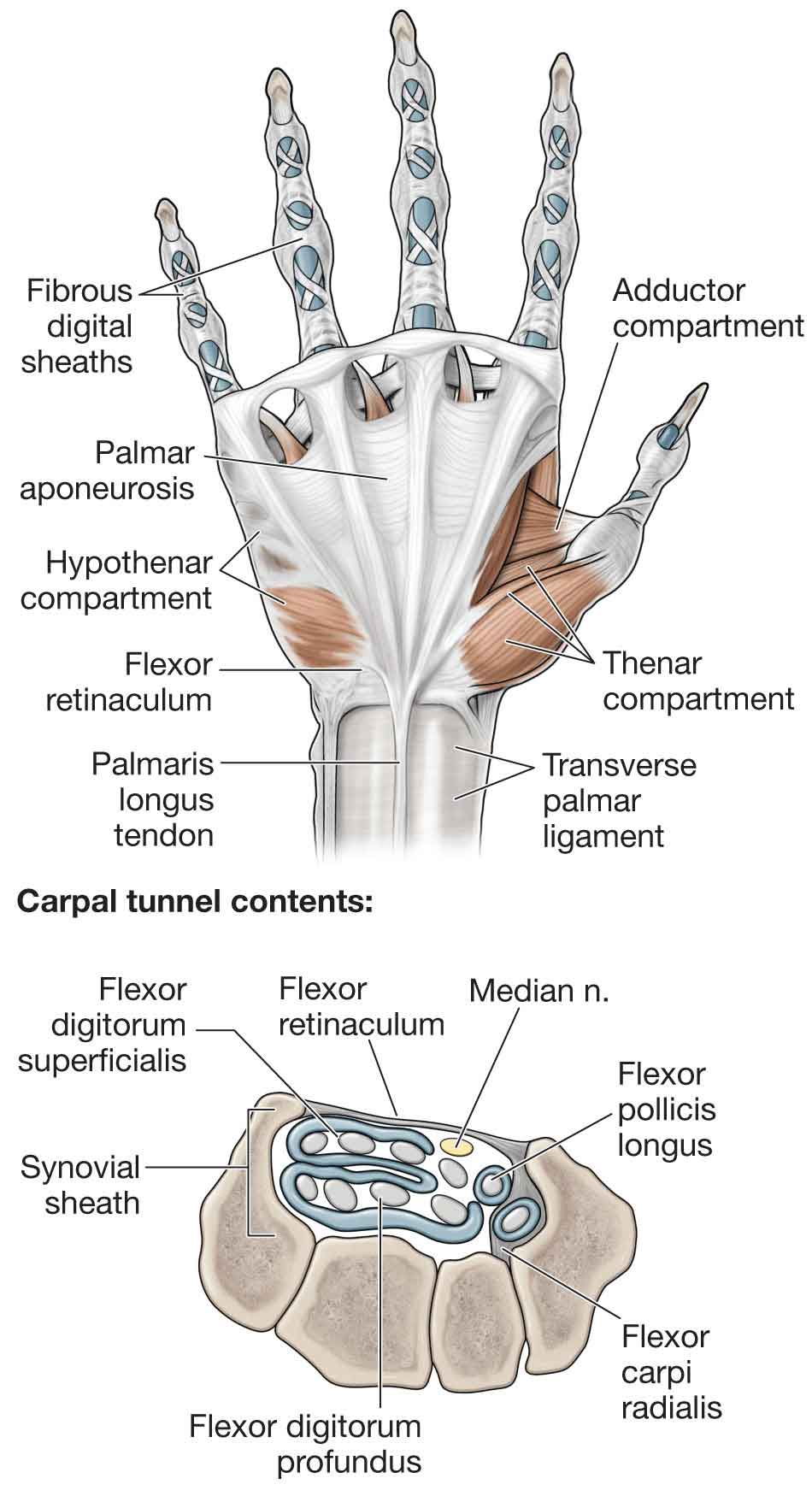
The Forearm, Wrist, and Hand Musculoskeletal Key
The roof of the carpal tunnel is formed by the flexor retinaculum (also known as transverse carpal ligament), a thick connective tissue ligament. This ligament bridges the space between the medial and lateral ends of the carpal arch, converting the arch into a tunnel. Contents Tendons of flexor digitorum profundus muscle
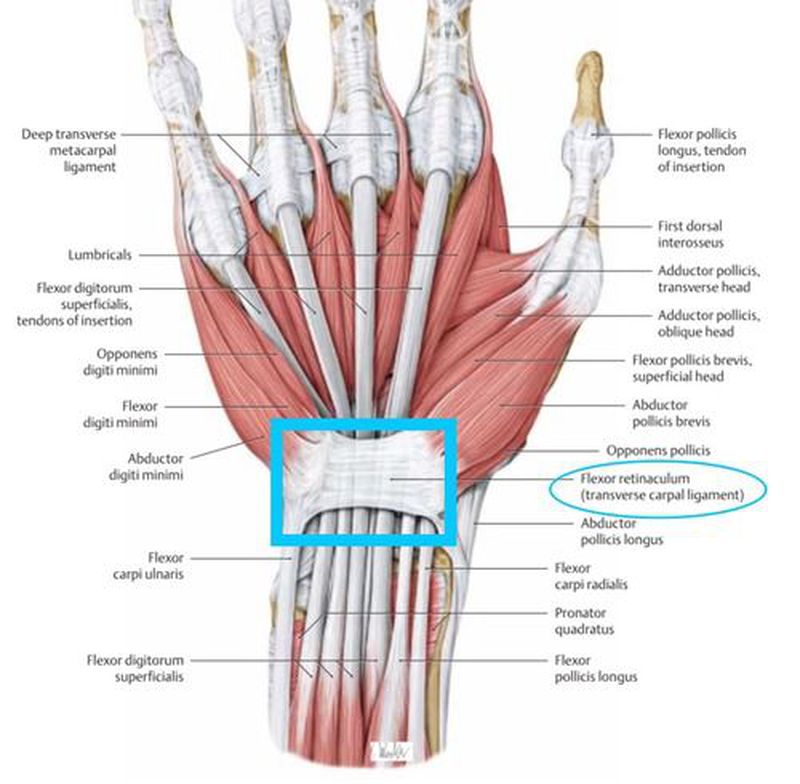
Flexor Retinaculum MEDizzy
Flexor Retinaculum Thick connective tissue which forms the roof of the carpal tunnel. Turns the carpal arch into the carpal tunnel by bridging the space between the medial and lateral parts of the arch. Spans between the hook of hamate and pisiform (medially) to the scaphoid and trapezium (laterally).

15 The Forearm Fascia and Retinacula Musculoskeletal Key
The flexor retinaculum is a fibrous connective tissue band that forms the anterior roof of the carpal tunnel (see Image. Flexor Retinaculum of the Wrist). Many experts consider the flexor retinaculum synonymous with the transverse carpal and annular ligaments.

Wrist Joint AnatomyBones, Movements, Ligaments, Tendons Abduction
The flexor retinaculum ( transverse carpal ligament, or anterior annular ligament) is a fibrous band on the palmar side of the hand near the wrist. It arches over the carpal bones of the hands, covering them and forming the carpal tunnel . Structure

Superior Extensor Retinaculum Anatomy, Musculoskeletal system
Anatomy of the flexor retinaculum For an accurate definition of the anatomic limits of the carpal tunnel, 26 cadaver upper extremities were studied by gross (lo), histologic (3), and radiographic (13) methods.. ture is the transverse carpal ligament.4-6 Flexor reti- nuculum and transverse carpal ligament are considered
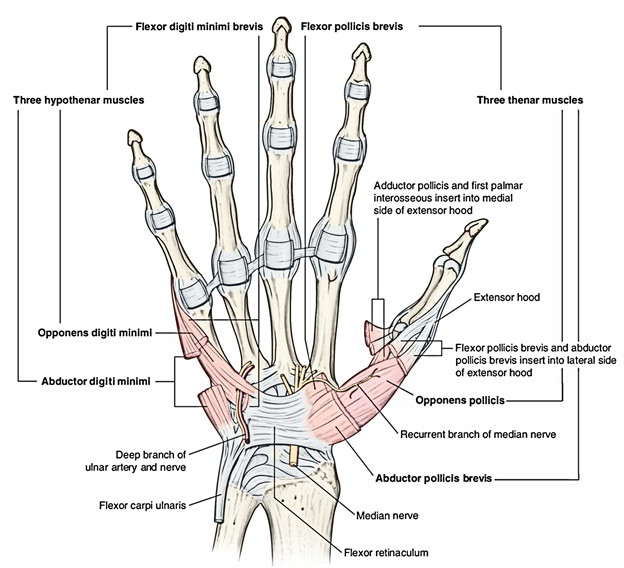
Flexor Retinaculum (Hand) Earth's Lab
First Online: 15 December 2022 20 Accesses Abstract The complex anatomy of the hand and wrist joints permits the intricate movements and high function of the upper limb. This chapter provides an overview of the bony anatomy of the hand and wrist, their articulations, and muscular and tendinous attachments. Keywords Hand Wrist Carpal
:watermark(/images/logo_url.png,-10,-10,0):format(jpeg)/images/anatomy_term/retinaculum-flexorum/UfDcRtsSwVXr5QZEpzZZSQ_MtMxTgGEQj_Retinaculum_flexorum_1.png)
Flexor retinaculum (Retinaculum flexorum) Kenhub
The flexor tendon sheaths of the remaining three fingers are separate. The radial bursa extends for the entire length of the flexor pollicis longus tendon and ends just proximal to the flexor retinaculum. The radial & ulnar bursa communicate at the level of the wrist joint in almost 50% of individuals. Dorsal carpal tendinous sheaths

The flexor retinaculum in the carpal tunnel consists of three segments
Flexor retinaculum is a strong fibrous band which bridges the anterior concavity of the carpal bones thus converts it into a tunnel, the carpal tunnel [1]. Attachments Medially, To the pisiform bone To the hook of the hamate Laterally, To the tubercle of the scaphoid To the crest of the trapezium [1]
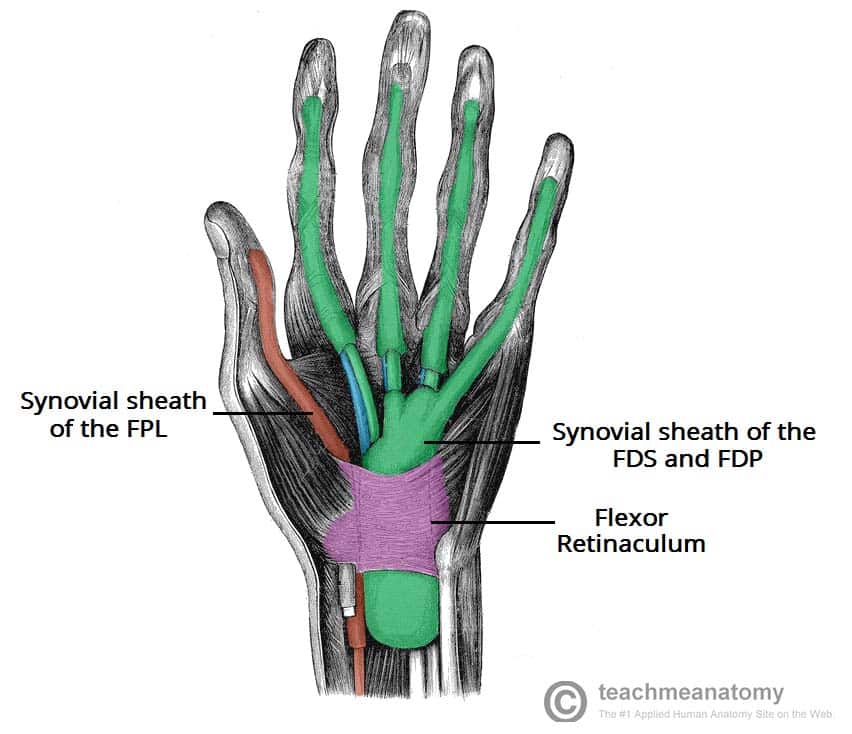
The Carpal Tunnel Borders Contents TeachMeAnatomy
The Palmar carpal ligament (PCL) is a distinct component of the antebrachial fascia. The distal part and the true covering of the carpal tunnel is the flexor retinaculum. There is an area in the distal part of the flexor retinaculum that consists of crisscrossing of muscle aponeurosis of the thenar and hypothenar muscles ( Fig. 18.9a,b ).
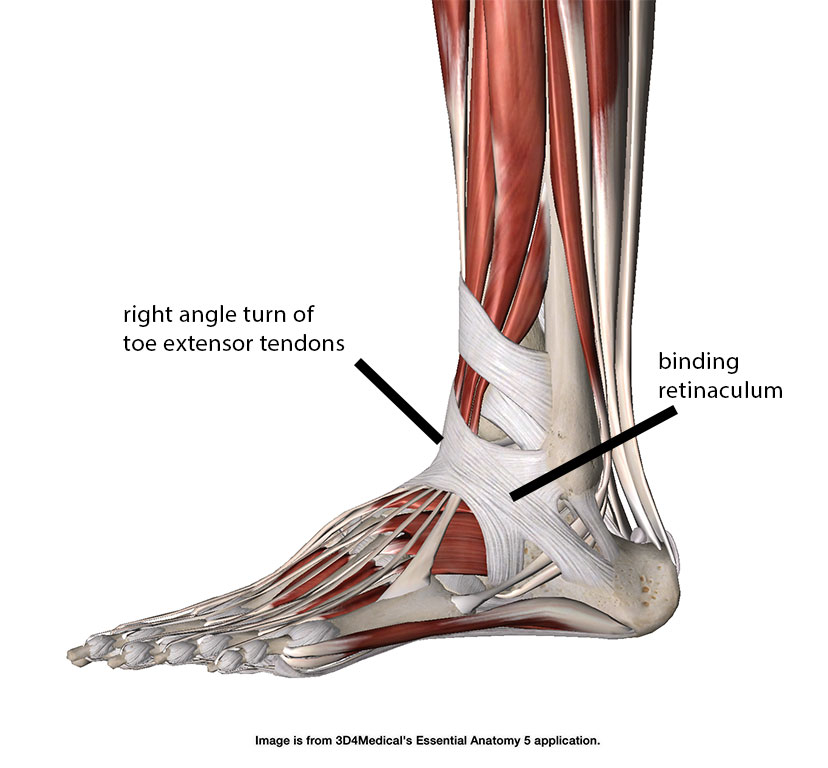
The Mechanical Function of Retinacula Academy of Clinical Massage
The terms transverse carpal ligament and flexor retinaculum have commonly been used to describe the fibrous structure running between the ulnar-sided hamate and pisiform bones and the radial-sided scaphoid and trapezium bones. However, the flexor retinaculum is composed of three parts. The most proximal part is continuous with the volar antebrachial fascia, the intermediate part is recognized.
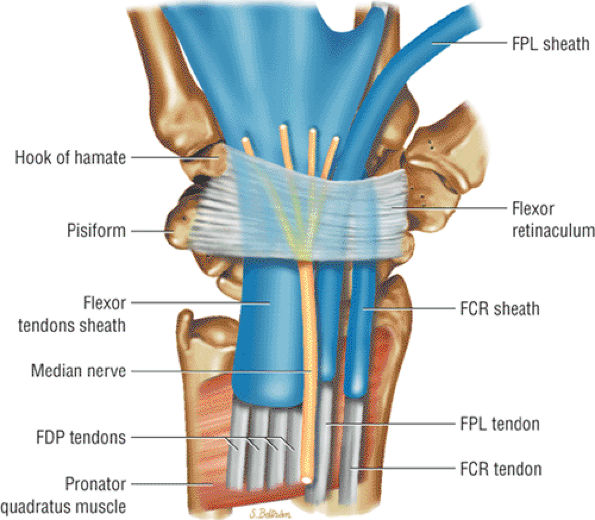
The Wrist and Hand TeachMe Orthopedics
The carpal tunnel is a relatively small space and contains the median nerve and nine tendons that also pass from the forearm into the fingers. Most commonly, CTS results when the tendons or their lining (the synovium) thicken or the ligament tightens. The space available for the median nerve is reduced, and the median nerve becomes compressed.
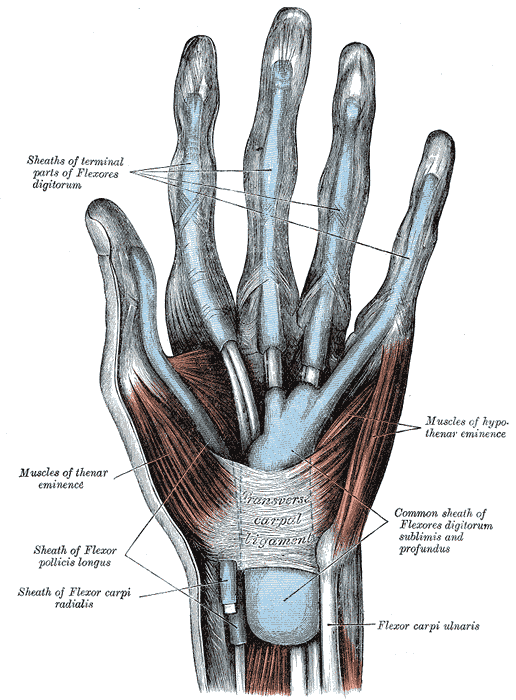
Flexor retinaculum Physiopedia
The flexor retinaculum of the foot is a strong fibrous band that covers the tendons of the muscles that flex the foot such as walking on the toes like a ballerina.

Flexor Retinaculum of Hand Anatomy l Surface marking l Structures
Structure Function List of Clinical Correlates Anatomical Relations The flexor retinaculum is continuous with the palmar carpal ligament. The ulnar artery and nerve and cutaneous branches of the median and ulnar nerves pass superficial to the flexor retinaculum.

Strained Flexor Retinaculum of the Foot
The flexor retinaculum of foot ( laciniate ligament, internal annular ligament) is a strong fibrous band in the foot . Structure The flexor retinaculum of the foot extends from the medial malleolus above, to the calcaneus below. [1]

View of the wrist showing the flexor retinaculum at the wrist and the
The flexor retinaculum branches off in two places, here and here, to enclose two small, separate tunnels. This one, on the radial side, encloses the tendon of flexor carpi radialis. This one, superficial and on the ulnar side, encloses the ulnar artery and nerve. We'll be returning to the flexor retinaculum later, to look at some important.

Pin em Musculoskeletal System
Definition The TCL is the middle portion of the flexor retinaculum (FR). 1 The proximal portion of the FR is the distal continuation of the antebrachial fascia. 2 The transition from the antebrachial fascia to the TCL can be identified based on gross inspection, predominantly marked by the abrupt increase in thickness.